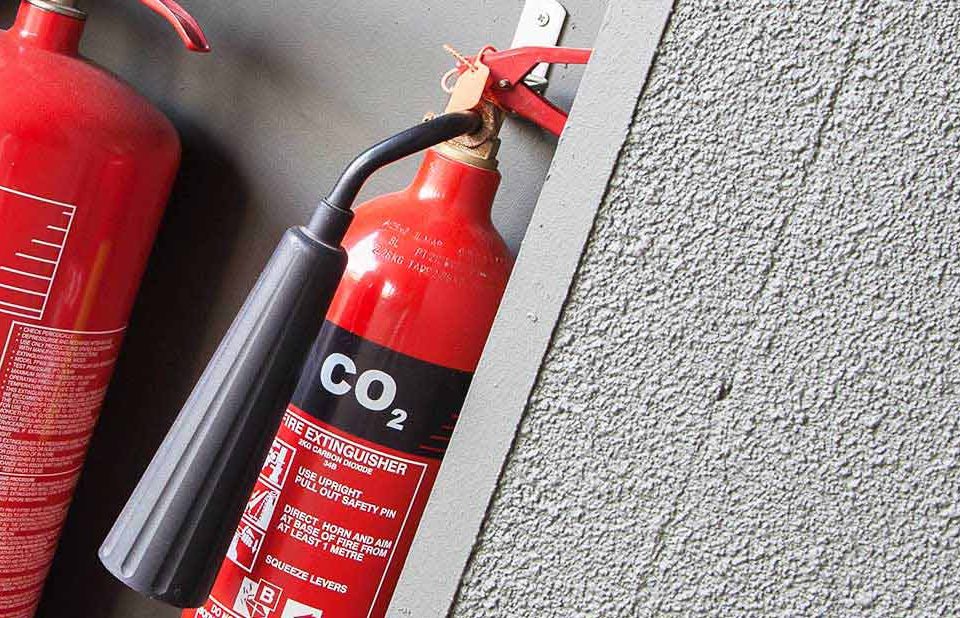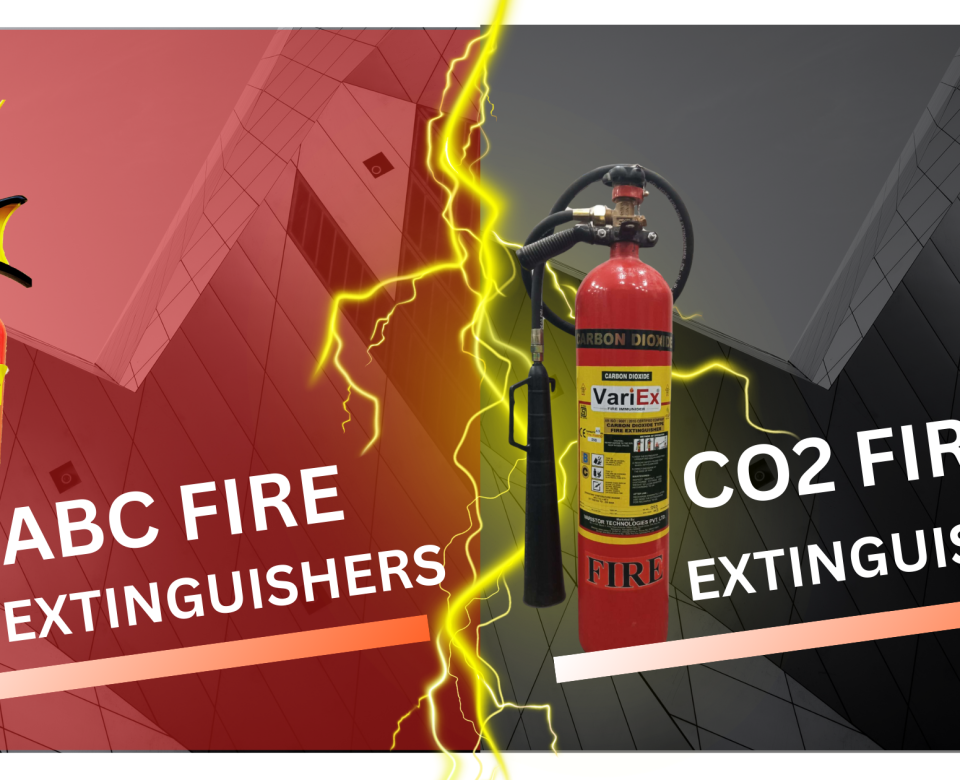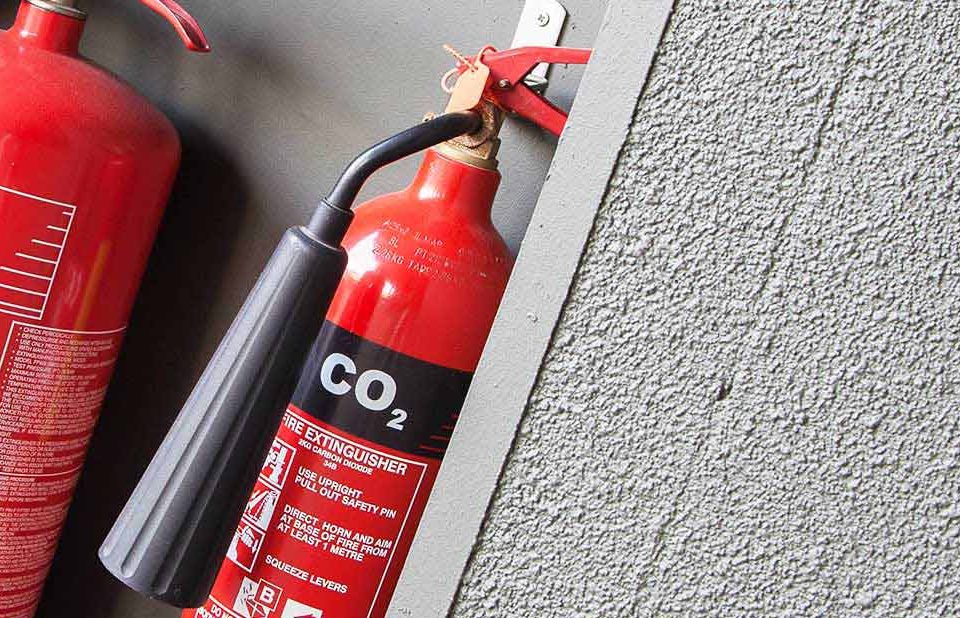
What Color is a Class K Fire Extinguisher?
October 30, 2025
What Are the Limits of a Fire Extinguisher?
November 8, 2025Fire safety in confined spaces is critical due to risks like limited ventilation, presence of flammable gases, and restricted escape routes. Using an incorrect fire extinguisher in these environments can make the situation worse. This blog explains the exact fire extinguisher recommended for confined spaces, helping you choose the safest and most effective one.
Understanding Confined Spaces
What Qualifies as a Confined Space?
Confined spaces are areas not meant for continuous human occupancy, with limited or restricted entry and exit. Examples are industrial tanks, underground utility vaults, storage silos, and certain residential crawl spaces. OSHA and NFPA define these spaces to help manage their unique hazards.
Common Fire Hazards in Confined Spaces
- Limited ventilation, causing flammable vapors or gases to build up
- Electrical faults leading to sparks or short circuits
- Combustible materials stored in tight quarters
These factors raise the fire risk and challenge fire suppression efforts.
What Type of Fire Extinguisher is Used in Confined Spaces?
Primary Recommended Extinguisher:
CO₂ fire extinguishers are widely recommended for confined spaces because they effectively extinguish electrical fires and flammable liquid fires (Class B) without leaving any residue. They operate by displacing oxygen around the fire flame with carbon dioxide gas, suffocating the fire. This characteristic makes CO₂ extinguishers ideal for enclosed spaces where clean-up and equipment safety are priorities.
Why CO₂ Fire Extinguishers Are Recommended
Key Benefits
- Non-conductive, making them safe for use on live electrical equipment
- No residue left behind, protecting sensitive machinery and electronics
- Highly effective on Class B fires (flammable liquids) and electrical fires
Ideal Work Environments for CO₂ Extinguishers
- Laboratories and chemical plants
- Electrical control rooms and server rooms
- Industrial confined spaces such as marine engine rooms
- Underground utility vaults and tunnel works
Alternative Fire Extinguishers for Confined Spaces
Dry Chemical (ABC) Extinguishers
These multipurpose extinguishers cover Class A, B, and C fires but leave a powdery residue that can damage sensitive equipment and be difficult to clean. They can be used in confined spaces if CO₂ extinguishers are unavailable but should be applied cautiously.
Water Mist Extinguishers
Water mist extinguishers use a fine spray that cools fires and is safe for electrical fires and people, making them suitable for oxygen-rich confined environments like healthcare and manufacturing facilities.
Safety Precautions When Using Fire Extinguishers in Confined Spaces
- Ensure proper ventilation, as CO₂ gas can cause suffocation in tightly sealed spaces
- Avoid holding the CO₂ extinguisher’s horn to prevent cold burns
- Users must be trained in proper extinguisher use
- Be aware of emergency exits before attempting to fight a fire
OSHA & NFPA Requirements
Employers must provide the appropriate type of fire extinguisher, ensure regular equipment maintenance, and train employees on fire safety in confined spaces. Compliance with standards is necessary for legal and insurance purposes.
Additional Fire Safety Measures for Confined Spaces
- Gas detection systems to monitor hazardous gases
- Fixed fire suppression systems for automatic response
- Emergency communication plans for immediate help
- Personal escape respirators as a backup during emergencies
Other Fire Safety Tools and Products
When considering fire safety products such as fire extinguisher cylinders, fire extinguisher balls, fire blankets, and fire buckets, it is essential to evaluate their applicability in confined spaces. Fire extinguisher balls, which automatically release fire suppressant upon contact with fire, offer easy deployment but are generally supplementary.
Fire extinguisher ball price in Pakistan and fire extinguisher ball price should be factored in if planning widespread safety installations. Fire blankets and fire buckets serve as useful additional measures, especially for small fires or emergency first response in confined areas.
Car fire extinguishers and wet chemical fire extinguishers serve specialized purposes, mainly outside confined spaces, such as vehicle fires and cooking oil fires, respectively.
Which Gas is Used in Fire Extinguisher?
The gas used in CO₂ fire extinguishers is carbon dioxide, a non-flammable gas that cuts off oxygen supply to the fire. This gas is stored in the extinguisher as a liquid under high pressure and quickly turns to gas upon discharge.
Fire Extinguisher Price Considerations
Fire extinguisher price varies by type and capacity. CO₂ fire extinguishers, though slightly pricier than standard dry chemical versions, offer the advantage of clean extinguishing without residue, making them cost-effective in protecting sensitive equipment and confined spaces.
For expert advice and affordable fire safety solutions including quality CO₂ fire extinguishers, fire extinguisher cylinders, fire balls, and other essential fire protection equipment at competitive fire extinguisher price in Pakistan, contact Haseen Habib. Ensure your confined spaces are protected with the right equipment and professional support.




